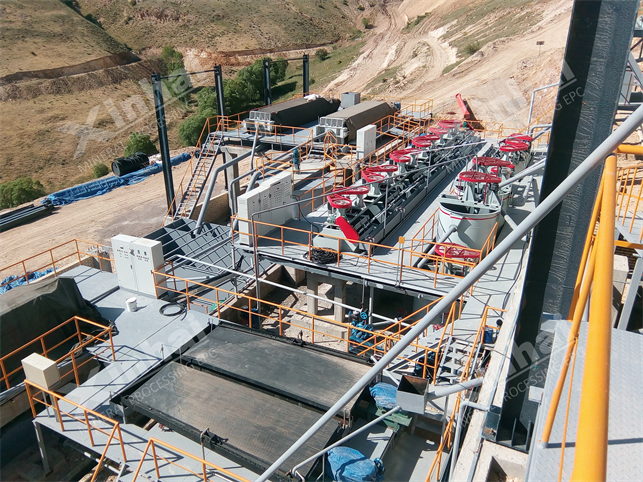Establishing a flotation plant that can process 300 tons of gold ore per day requires a series of equipment to complete the entire process from crushing, grinding, flotation to concentration and dehydration. Here are these devices and their recommended models, as well as the connection methods between them.
1. Crushing and screening equipment
Jaw crusher and cone crusher are used to crush ores. The vibrating screen is used to screen ores of different particle sizes. If the particle size is too large, it will return to the crusher for further crushing.
Recommended model: Vibration feeder (GZD-750 × 2500 vibration feeder); Jaw crusher PE-400 × 600 type (used for primary crushing); Cone crusher: PYB-900 type (used for secondary crushing).
2. Grinding and grading equipment
A ball mill or rod mill is used to crush and grind ore to a suitable particle size for flotation. Spiral classifier or hydrocyclone, used to classify the finely ground slurry according to particle size.
Recommended model: MQG-2100 × 3000 ball mill (diameter 2100mm, length 3000mm, used for grinding); Spiral classifier: FG-10 type (used for slurry classification after grinding).

3. Flotation equipment
Flotation machines (such as mechanical stirring flotation machines and inflatable flotation machines) are used to achieve mineral flotation separation.
Recommended models: XCF-4 flotation machine (for rough selection and selection), KYF-4 flotation machine (for sweeping selection)
4. Drug addition system
Mixing bucket and automatic reagent addition device, used for accurately adding various flotation reagents, such as collectors, adjusters, and foaming agents.
5. Concentration and filtration equipment
Thickener and filter are used to concentrate and dehydrate flotation foam products.
Recommended model: high-efficiency thickener NZS-10 (used for concentrating flotation concentrate); Filter press: XGZ-50/1000 type (used for concentrate dewatering); Tailings dewatering screen: TS-1530 type (used for tailings dewatering).
6. Pump and pipeline system: a pump used for conveying slurry and reagents, as well as pipelines connecting various processes.
7. Control system: An automated control system used to monitor and regulate the entire flotation process.
8. Feeding equipment: belt conveyor (DT-65 type belt conveyor), vibrating feeder, screw feeder, etc., used for uniform feeding.
9. Mixing equipment: Mixing drum or tank, used for fully mixing slurry and reagents.
10. Wastewater treatment facilities: used to treat wastewater generated during flotation processes, ensuring environmentally friendly discharge.
11. Compressed air supply system: providing necessary bubbles for the flotation machine.
12. Electrical and lighting facilities: power supply system, lighting equipment, to ensure the normal operation of the factory.
13. Safety and firefighting equipment: ensuring the safety of workers.
14. Office and laboratory equipment: used for daily management and experimental analysis work.
The above equipment configuration may be adjusted according to specific ore characteristics and production process requirements.
1. Crushing stage
The raw ore is fed into the jaw crusher for primary crushing through a vibrating feeder (GZD-750 × 2500 vibrating feeder); The ore after primary crushing is sent to the cone crusher for secondary crushing through a conveyor belt (DT-65 type belt conveyor).
2. Grinding and grading stages
The ore after secondary crushing is sent to the ball mill for grinding through a conveyor belt; The slurry after grinding enters the spiral classifier for classification, the coarse particles return to the ball mill for further grinding, and the fine particles enter the flotation stage.
3. Flotation stage
The fine-grained slurry enters the flotation machine and undergoes rough selection, selection, and sweeping, respectively using XCF-4 flotation machine and KYF-4 flotation machine.
4. Concentration and filtration stage
The flotation concentrate slurry is sent through pipelines to an efficient thickener for concentration; The concentrated concentrate slurry enters the filter press for dehydration to obtain the final concentrate.
5. Tailings treatment stage
The flotation tailings are sent through pipelines to the tailings dewatering screen for dewatering treatment, and the dehydrated tailings are transported by conveyor belts to the tailings pond for stacking.
The 300 ton gold ore beneficiation plant equipment and recommended models introduced above are for reference only. In the actual design and construction process, it is recommended to consult professional beneficiation engineers to ensure the rationality of the process flow and the optimization of equipment selection.